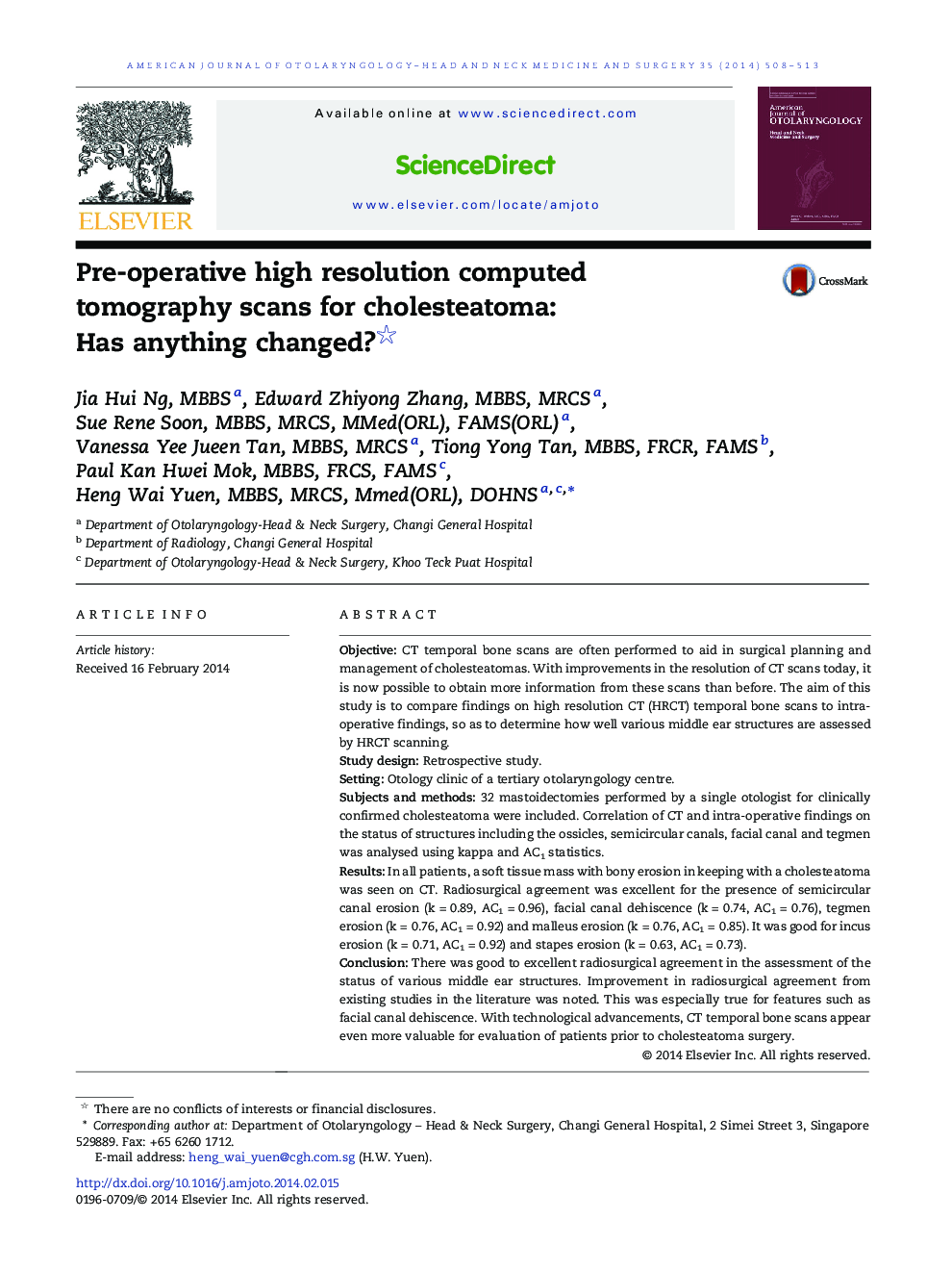| Article ID | Journal | Published Year | Pages | File Type |
|---|---|---|---|---|
| 4103088 | American Journal of Otolaryngology | 2014 | 6 Pages |
ObjectiveCT temporal bone scans are often performed to aid in surgical planning and management of cholesteatomas. With improvements in the resolution of CT scans today, it is now possible to obtain more information from these scans than before. The aim of this study is to compare findings on high resolution CT (HRCT) temporal bone scans to intra-operative findings, so as to determine how well various middle ear structures are assessed by HRCT scanning.Study designRetrospective study.SettingOtology clinic of a tertiary otolaryngology centre.Subjects and methods32 mastoidectomies performed by a single otologist for clinically confirmed cholesteatoma were included. Correlation of CT and intra-operative findings on the status of structures including the ossicles, semicircular canals, facial canal and tegmen was analysed using kappa and AC1 statistics.ResultsIn all patients, a soft tissue mass with bony erosion in keeping with a cholesteatoma was seen on CT. Radiosurgical agreement was excellent for the presence of semicircular canal erosion (k = 0.89, AC1 = 0.96), facial canal dehiscence (k = 0.74, AC1 = 0.76), tegmen erosion (k = 0.76, AC1 = 0.92) and malleus erosion (k = 0.76, AC1 = 0.85). It was good for incus erosion (k = 0.71, AC1 = 0.92) and stapes erosion (k = 0.63, AC1 = 0.73).ConclusionThere was good to excellent radiosurgical agreement in the assessment of the status of various middle ear structures. Improvement in radiosurgical agreement from existing studies in the literature was noted. This was especially true for features such as facial canal dehiscence. With technological advancements, CT temporal bone scans appear even more valuable for evaluation of patients prior to cholesteatoma surgery.
